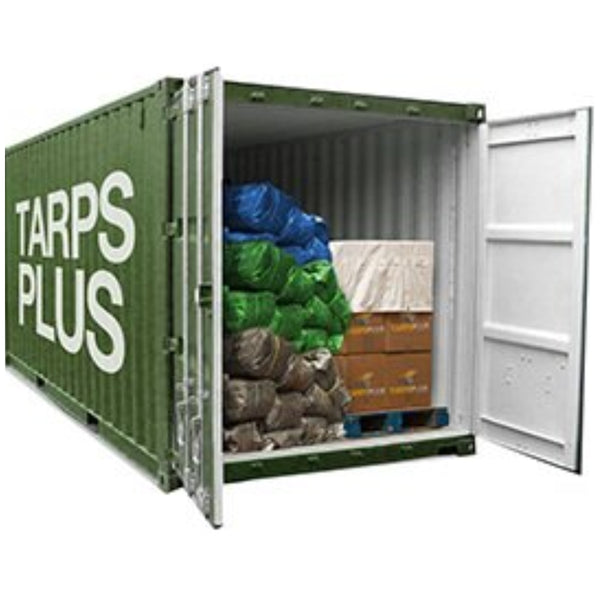Filter
Shop By Categories
-
Poly Tarps
-
Blue Poly Tarps
-
Brown Poly Tarps
-
Silver Poly Tarps
-
White Poly Tarps
-
Silver/Black Poly Tarps
-
White/Silver Poly Tarps
-
Tan Poly Tarps
-
Camouflage Poly Tarps
-
Clear Poly Tarps
-
Red Poly Tarps
-
Orange Poly Tarps
-
Yellow Poly Tarps
-
Green Poly Tarps
-
Silver Fire Retardant Tarps
-
White Fire Retardant Tarps
-
Light Duty Poly Tarps
-
Blue Poly Tarps
- Canvas Tarps
- Mesh Tarps
- Heavy Duty Tarps
- Fire Retardant Tarps
- Canopies
-
Pop Up Tents
- Vinyl Tarps
- Clear Tarps
- Specialty Tarps
-
Sale
- Accessories
materials
The materials used for our tarps all have different uses. Be sure to order the material that would be best suited for your application. Below are the various types of tarp materials.
Polyethylene tarps: (commonly known as poly tarps) Polyethylene, discovered by German chemist Hans von Pechmann in 1898 is the beginning of what revolutionized the plastic cover industry. When chromium trioxide was introduced in 1951 and the incorporation of magnesium chloride in the early 1970s it enabled the manufacturing of the common polyethylene tarp as we know it today. This simple plastic cover have become the staple for many applications ranging from snow and rain protection, some production, debris covering and a slew of other limitless applications. The ease of manufacturing various colors into the plastic have also made it a dynamic and easily accessible cover for many industries uses. Polyethylene absorbs nearly 0% water and the water and gas vapor probability is lower than most other plastics.
Canvas tarps: Canvas is composed of a very durable plane woven fabric. The Greek and Latin origin of the wording canvas derives from its meaning, made of hemp. Most canvas tarps are made of cotton or hemp. Histories first canvas covers were mainly made from hemp. The two different types of canvas our plain and duck.
Vinyl tarps: Vinyl is derived from the ethylene molecule. The vinyl tarps are typically more heavy-duty than the polyethylene tarps. The more advanced final polymers have enabled the tarp world to make a more heavy-duty tarp. The vinyl tarps tend to be more expensive than polyethylene but last longer and handle abrasive services more resiliently.
Poly mesh tarps: The poly mesh tarps are composed of sick strands of polyethylene creating a mesh-like material. The polyethylene mesh tarps are not waterproof but are a convenient Sun and windscreen due to its loosely mesh woven pattern. The poly strands are thick enough to withstand heavy sunrays to enable supplying long term sunshade. The mesh material is also used as a wind diffuser on canopy and tent structures. Mini golf courses use the mesh tarps for privacy and shade protection; this is preferred as opposed to a solid piece of material because of less wind resistance.
Vinyl mesh tarps: The vinyl mesh tarps are basically built the same as the polyethylene mesh tarps but more heavy duty. Using a vinyl polymer as opposed to a polyethylene material ensures a longer-lasting more resultant piece of material. Vinyl mesh tarps are much more expensive than the basic polyethylene mesh tarps but are an essential option for long-term and industrial use.
PVC tarps: PVC is an abbreviated term for polyvinyl chloride. PVC tarps are of the flexible type of polyvinyl chloride as opposed to the rigid type which is more commonly found in PVC pipe. Plasticizers are put in PVC to create tarp-like material. PVC tarps are widely used for industrial purposes such as welding curtains and floor coverings.
Polyester tarps: Polyester is a variation of another material within the polyethylene family. Polyesters a thermal plastic material dealt with woven or need a thread. Polyester fibers are mostly spun together with other natural fibers. Super heavy duty polyester tarp material is usually found in tent and awning material.
Rip-stop tarps: Rip-stop material is A woven fabric that is usually made of nylon. The type weaving and reinforcing of the material during the manufacturing stage makes it resilient to ripping and tearing. Rip-stop tarps with this special crosshatch weaving process makes for a light duty but super resilient material.
Nylon tarps: Nylon tarps are basically the family of rip-stop tarps and very types of synthetic polymers in the thermoplastic family.
 FAST SHIPPING- LOWEST PRICE GUARANTEE
FAST SHIPPING- LOWEST PRICE GUARANTEE



